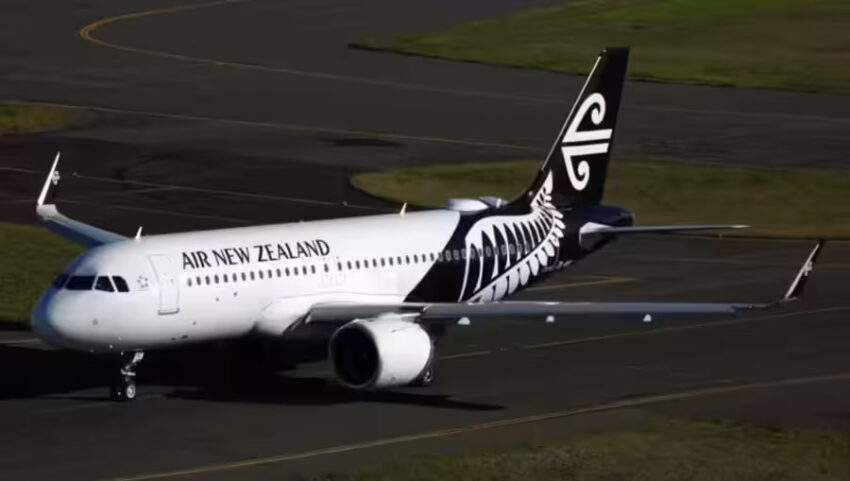Monday, May 12, 2025
Air New Zealand was forced to cancel multiple flights and issue urgent travel alerts after a sudden volcanic eruption at Whakaari, also known as White Island, sent a plume of ash drifting into Bay of Plenty airspace, triggering widespread disruption across Tauranga Airport. The volcanic ash cloud, propelled westward by light easterly winds, posed a serious risk to aviation safety, grounding aircraft and leaving others out of position for scheduled operations. Authorities confirmed ongoing low-level eruptive activity, prompting the Wellington Volcanic Ash Advisory Centre to issue an official warning as satellite imagery revealed ash spreading farther than initially forecasted. With the volcano remaining at Alert Level Three and the Aviation Colour Code set to Orange, Air New Zealand continues to monitor the situation closely while urging passengers to check for live flight updates, as safety remains the top priority amid the ongoing natural hazard.
Volcanic Ash Cloud from White Island Forces Flight Cancellations at Tauranga Airport
Air travel in the Bay of Plenty faced significant disruptions this week as volcanic activity from Whakaari, also known as White Island, sent ash drifting into the region’s airspace, forcing multiple flight cancellations at Tauranga Airport.
Air New Zealand grounded four of its scheduled flights on the evening of Sunday, May twelfth, after a plume of steam and gas from the island’s crater rose high enough to spread across nearby flight paths. The disruptions extended into Monday morning, with two additional flights canceled due to aircraft being displaced by the earlier operational impacts.
The source of the disruptions was traced to a low-level volcanic eruption at Whakaari, New Zealand’s most active offshore volcano. A notice from the Wellington Volcanic Ash Advisory Centre, supported by satellite imagery, confirmed ongoing eruptive activity and warned that ash particles had been observed farther west than previously forecasted. This unexpected drift brought the ash into the skies above Tauranga, prompting safety precautions and operational adjustments for commercial flights.
Whakaari is currently on Volcanic Alert Level Three, indicating a minor eruptive state. The Aviation Colour Code remains at Orange, which signals active volcanic activity with limited ash emissions that still pose a risk to aviation. Light easterly winds over the weekend carried the volcanic plume toward the mainland, with Tauranga’s airspace directly in its path.
While the ash cloud was not dense enough to pose significant health concerns at ground level, it created a serious hazard for aviation. Volcanic ash can damage aircraft engines, reduce visibility, and interfere with onboard instruments, prompting airlines to reroute or cancel flights out of an abundance of caution.
Air New Zealand has advised travelers to remain vigilant and check the airline’s mobile app and official website for live updates on flight schedules. As of now, the airline does not expect ongoing disruptions, but continues to monitor the situation in collaboration with geological and meteorological experts.
The public is also encouraged to stay informed through GeoNet, New Zealand’s geological hazard monitoring agency, and the Volcanic Ash Advisory Centre for updates on ash advisories and eruption status.
Whakaari/White Island, located approximately fifty kilometers offshore from Whakatāne in the Bay of Plenty, has long been recognized as one of New Zealand’s most volatile geological features. The island has a history of unpredictable eruptions, with the most devastating in recent memory occurring in December 2019. During that eruption, sudden explosive activity tragically claimed twenty-two lives and left dozens injured, many of whom were tourists on guided visits.
That event, which sent shockwaves around the globe, cast a long shadow over New Zealand’s tourism and emergency preparedness sectors. The fifth anniversary of the 2019 disaster was solemnly commemorated in December 2024 in Whakatāne, with families of the victims, first responders, and government officials gathering to honor those lost and reflect on lessons learned.
In light of Whakaari’s unpredictable nature, officials have maintained restrictions on direct visits to the island, and access remains tightly controlled. Monitoring equipment continuously feeds data on seismic activity, gas emissions, and surface temperatures to authorities to provide timely warnings and mitigate risks to the public and aviation networks.
Although Monday’s flight disruptions appear to be temporary, the incident underscores the broader challenges that volcanic activity presents to infrastructure and safety in New Zealand’s geologically dynamic landscape. With Whakaari still active and the potential for atmospheric changes affecting ash dispersal patterns, aviation authorities remain on alert.
Travelers in and around Tauranga are advised to stay updated on weather and airspace advisories, particularly if planning to fly in the coming days. Meteorologists will continue to track wind conditions and potential ash movement, while aviation operators maintain close coordination with volcanic experts to ensure passenger safety.
As of Monday afternoon, skies over the Bay of Plenty began to clear, and no additional flights had been canceled beyond those already reported. Authorities are cautiously optimistic that the worst of the disruption has passed, but acknowledge that conditions could change quickly.
Air New Zealand faced significant travel disruption after a sudden eruption at White Island sent volcanic ash drifting into Tauranga’s airspace, forcing multiple flight cancellations. The airline cited safety concerns as ash spread farther than expected, prompting urgent operational adjustments.
In the meantime, the incident serves as a stark reminder of the power of nature and the importance of preparedness in a country shaped by seismic and volcanic forces.
